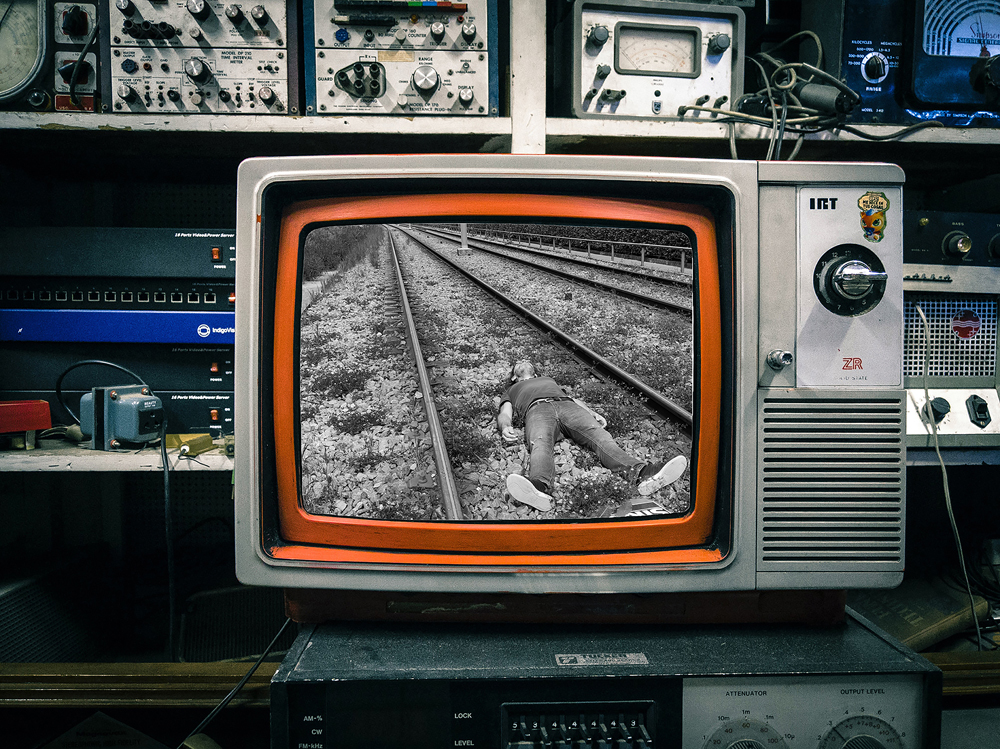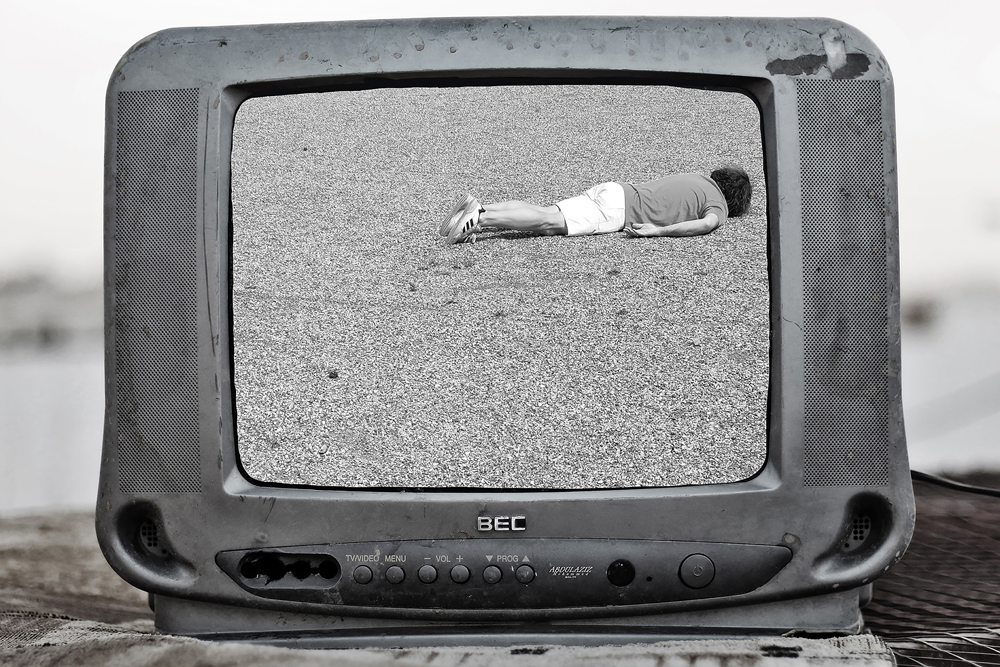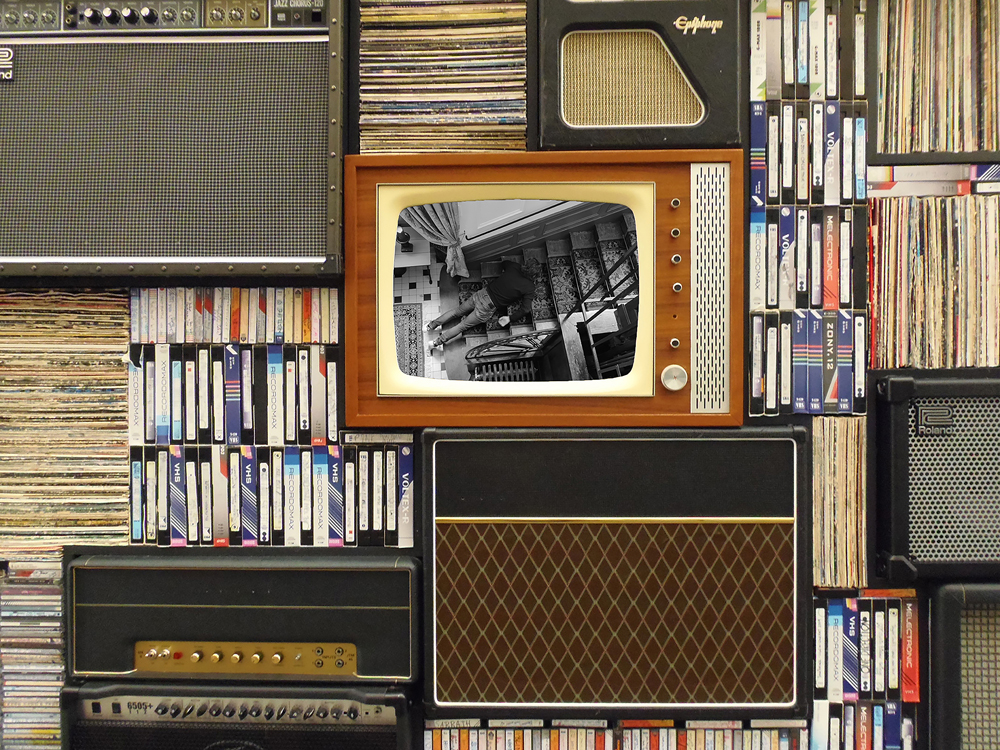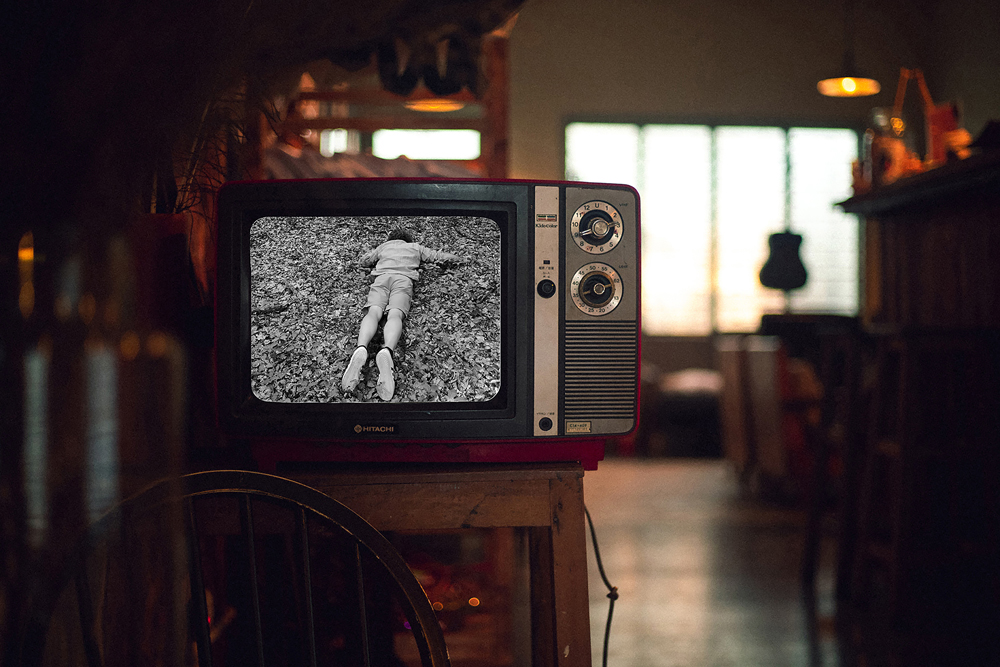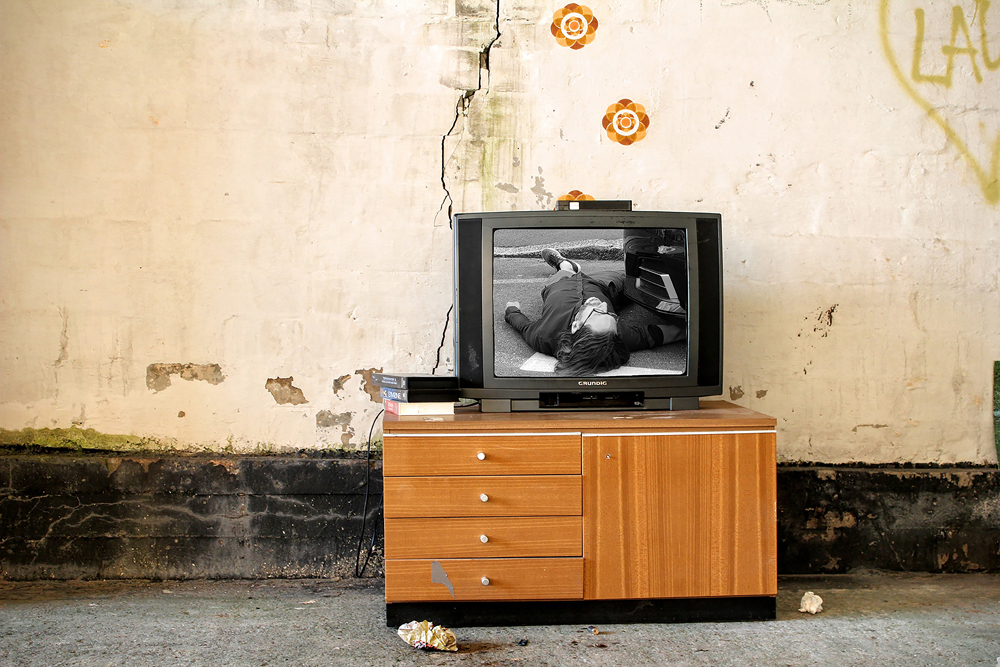GRAINES DE VIOLENCE
Texte de GIOACCHINO PEZZATI ©® Gioacchino Pezzati est responsable d’opérations éditoriales sensibles dans la Province de Palerme, en Sicile.
« Je me souviens avec plaisir d’une Professeure de secondaire qui nous enseignait à écrire en italien, en laissant chaque jour comme devoir à la maison la rédaction de pensées sur tout sujet qui passait par la tête de ses élèves.
Ainsi, en exploitant l’imagination et l’inspiration, nous apprenions peu à peu à écrire en italien et je dois dire que l’opération, au cours des années suivantes étaient remémorée, avec beaucoup de respect et de succès ; chacun avait la possibilité d’observer de ses propres yeux tout ce qu’il voulait, même un insecte, et de le décrire en liberté.
Il aurait également été utile, dans le domaine psychologique, de détecter les différentes sensibilités et les possibilités visuelles.
Voici la brève synthèse relative à la série de photographies imaginée par Frédéric Bourret qui semble scander et s’inspirer de ces temps où celui qui sait lire et a une vision peut saisir avec une âme inquiète les temps où nous vivons faits d’une violence quotidienne qui nous martèle et de façon subliminale, laissant au spectateur une tristesse, et l’acceptation que technologie et les événements quotidiens trouvent un mariage consentant.
Disons que, dans cette série d’images qui prend comme sujet la TV et la violence, il manque peut-être une image liée à l’espoir. Une image d’un autre temps concernant le début de l’invention quand cette boîte magique appelée TV faisait rêver en regroupant autour d’elle des générations entières de parents, enfants, amis qui voyaient en elle une nouveauté, un stimulus et un moment de sain divertissement, ayant presque la même fonction qu’une cheminée par une journée de froid.
Au moins, les premiers souvenirs que j’ai de la télé étaient ceux-ci, mais peut-être que cela dépendait aussi des valeurs d’une société qui, sortant de la guerre, sentait vivre l’espoir. Malheureusement, avec les années, elle est devenue, avec d’autres médias, un instrument de manipulation des esprits, un symbole de désintégration sociale où la parole et l’image assument un point de catalysation des esprits, similaire à ce qui se passe avec les réseaux sociaux qui, bien que conditionnés, sont peut-être moins hargneux car ils ont, au moins pour l’instant, une plus grande liberté de choix et de protagonistes, même si parfois vulgaires et infantiles, sont exposés à tant de mensonges et informations difficilement vérifiables.
Nous ne savons pas ce que l’avenir nous réserve avec les diverses intelligences artificielles ; le progrès ne peut être supprimé, mais il peut aller de pair avec l’espoir d’une civilisation des valeurs, même si elle est mondialisée, où la vraie culture, celle libre de conditionnements et liée à l’être, trouve la juste reconnaissance.
Les photos de Frédéric Bourret invitent à prendre pleinement conscience que nous avons aussi une responsabilité face à la violence et à sa coexistence quotidienne à travers la TV. Car nous en devenons complices pour nous-mêmes et pour les autres.
Dans sa série Graines de violence, l’artiste photographe exprime parfaitement, d’une manière sobre et élégante, avec une esthétique particulière dirais-je, des sensations qui créent une réaction personnelle, unique, vivante, spontanée ; la beauté de la photographie est plus forte et rejette la violence. La série de neuf photos semble inspirer une histoire dans laquelle l’espoir d’une évolution… une ré-évolution, doit aussi être trouvée et interprétée.
Dans ce qui suit, je commente la série de photographies Graines de violence de Frédéric Bourret:
Une ancienne – mais pas si vieille – TV stéréo, avec un son plus sophistiqué des années 1970, pas en couleur, mais en noir et blanc, émerge d’un vieux mur, nous plonge dans la froideur d’une saison néfaste de morts dans la rue ; cette photo pourrait considérer un temps où les médias et le terrorisme ont marqué l’angoisse et la terreur d’une période pas trop lointaine où la violence a vécu à côté de nous (en Italie) avec les « Années de Plomb » et aussi les meurtres de la mafia… avec des médias de masse fournissant un programme quotidien de violence de bas niveau et s’imposait, nous tenant compagnie à toute heure de la journée, faisant aussi des nouvelles une violence sur notre esprit…
Puis, un fond à l’atmosphère crépusculaire, la scène entourée d’une pâle teinte picassienne bleuâtre, qui tout en symbolisant une forme de pureté, est aussi brouillée par l’acceptation d’une image sanglante qui nous fait vivre la violence projetée par la télévision avec une certaine sublimation.
Sur une autre photo, dans l’orange vintage des années 70, le noir et blanc de la télévision bien que, placée dans l’intimité de la cuisine, trouve son espace, en s’imposant encore une fois en diffusant et en transmettant des images d’une génération qui s’est déjà livrée à la mesquinerie..
Et sur l’image suivante, nous pouvons voir un monde crépusculaire où le bleu est encore plus intense que la présence d’une mort violente, en alimentant un sens de silence de l’âme et des heures nocturnes où la vitalité est déjà en soi souvent fondée sur la solitude.
Une autre photo montre l’intérieur d’un appartement aux contours flous d’où émerge une scène violente, peut-être celle d’un enfant assassiné entouré de terres violées, où la chaleur d’une maison nourrit un espoir lointain.
Puis, les humeurs d’une nouvelle image surgissent dans une ambiance qui semble celle d’un collectionneur, si imprégnées de couleurs cachées qu’elles semblent amplifier l’atmosphère d’une image négative violente où la dualité est présente et est transmise par une télévision presque fausse et sans âme, violant ainsi l’esprit de celui qui fait de sa collection une bannière de recherche pour la création, la particularité et l’unicité.
Nouvelle image, nouvelle scène : des plantes vivantes mais maigres font ressortir une télévision en plastique qui met en évidence une image de mort ou de fatigue culturelle d’un homme penché sur une table avec des barreaux derrière lui qui attestent d’une prison des sens dont peut-être il voulait s’échapper en esprit.
Dans la photo suivante, l’acquiescement et la signification de l’image est peut-être dans la découverte d’un suicide, où la netteté des contours et la couleur semblent annoncer ce choix, et où les quatre pieds du meuble qui porte la télévision (avec le corps) s’imposent comme indice… d’une mort déjà annoncée…
Enfin, un gris vieilli marque et fait ressortir un noir et blanc porteur sans âge de la mort, mais avec un espoir subtil qui le sauve du noir total, le tout cependant sans aucune couleur vive.
Alors que sur la dernière photo, la teinte orange dégage encore des sensations de vitalité ténue où un peu de bleu émerge d’un gris vintage et technologique. L’image s’élève du gris des lieux où l’angoisse se perd sur les longues lignes droites du chemin de fer, sanctionnant un choix qui engendre l’angoisse, mais aussi un faible espoir que le sujet puisse se repentir dans le temps et se sauver.
La force de cette série ne demeure pas dans le corps inanimé, mais dans l’esthétique que seul l’Art est capable de créer; une esthétique symbolique, qui cherche avant tout la beauté et qui nous fait prendre conscience de combien l’argument télé et violence peut être lié, dévier parfois, et ainsi s’éloigner des belles intentions nées avec cette invention. La télévision n’ouvre plus l’esprit, elle le conditionne, et il faut de l’Art pour nous faire prendre conscience qu’il faudra changer quelque chose… selon la civilisation et la sensibilité que nous souhaitons vraiment vivre et cultiver. »
Text by GIOACCHINO PEZZATI ©® Gioacchino Pezzati is responsible for sensitive editorial operations in the Province of Palermo, Sicily.
« I fondly remember a secondary school teacher who taught us to write in Italian, assigning us the daily task of writing thoughts on any subject that crossed the minds of her students.
By harnessing imagination and inspiration, we gradually learned to write in Italian, and I must say that the operation, in the following years, was recalled with much respect and success. Each one had the opportunity to observe whatever they wanted with their own eyes, even an insect, and describe it freely.
It would also have been useful, from a psychological perspective, to identify different sensitivities and visual capabilities.
Here is a brief summary of the series of photographs conceived by Frédéric Bourret, which seems to echo and draw inspiration from those times when someone who can read and has a vision can capture, with a restless soul, the times we live in, characterized by daily violence that relentlessly permeates us and, subliminally, leaves the viewer with a sense of sadness and an acceptance that technology and daily events find a consenting marriage.
In this series of images that focuses on TV and violence, there may be a missing image related to hope. An image from a different time, at the inception of the invention when this magical box called TV used to delight by bringing together entire generations of parents, children, and friends who saw in it something new, a stimulus, and a moment of wholesome entertainment, almost akin to a fireplace on a cold day.
At least, my earliest memories of television were like this, but perhaps it also depended on the values of a society emerging from a war, sensing hope. Unfortunately, over the years, it has become, along with other media, a tool for manipulating minds, a symbol of social disintegration where language and images assume a focal point for the mind, similar to what happens with social media which, though conditioned, may be less vitriolic because, at least for now, they have more freedom of choice and participants, even if at times vulgar and childish, are exposed to a plethora of lies and information that is hard to verify.
We do not know what the future holds for us with various forms of artificial intelligence; progress cannot be eliminated, but it can go hand in hand with the hope of a civilization rooted in values, even if globalized, where true culture, free from conditioning and linked to human existence, finds the recognition it deserves.
Frédéric Bourret’s photos invite us to fully understand that we also have a responsibility in the face of violence and its daily coexistence through television. We become complicit in it, both for ourselves and for others.
In his series « Graines de violence » (Seeds of Violence), the artist-photographer perfectly expresses, in a sober and elegant manner, with a unique aesthetic, I would say, sensations that elicit a personal, unique, vivid, and spontaneous reaction. The beauty of photography is more potent and rejects violence. The series of nine photos seems to inspire a story in which the hope for an evolution… a re-evolution, must also be found and interpreted.
In the following, I comment on Frédéric Bourret’s series of photographs, « Graines de violence »:
An old – but not so old – stereo TV, with a more sophisticated sound from the 1970s, not in color but in black and white, emerges from an old wall, plunging us into the coldness of a disastrous season of deaths in the streets; this photo could consider a time when the media and terrorism marked the anxiety and terror of a not-so-distant period when violence lived next to us (in Italy) with the ‘Years of Lead’ and also the mafia murders… with mass media providing a daily program of low-level violence that intruded on our minds and kept us company at all hours of the day, making the news a form of violence on our minds…
Then, a background with a twilight atmosphere, the scene surrounded by a pale, bluish, Picassoesque tint, which, while symbolizing a form of purity, is also blurred by the acceptance of a violent image that makes us experience the violence projected by television with a certain sublimation.
In another photo, in the vintage orange of the 1970s, the black-and-white television, though placed in the intimacy of the kitchen, finds its space, imposing itself once again by broadcasting and transmitting images from a generation that had already surrendered to pettiness…
And in the next image, we can see a twilight world where the blue is even more intense than the presence of a violent death, fueling a sense of soul-silencing and the nocturnal hours when vitality is often based on solitude.
Another photo displays the interior of an apartment with blurry outlines, from which emerges a violent scene, perhaps that of a murdered child surrounded by violated lands, where the warmth of a home nurtures a distant hope.
Then, the moods of a new image emerge in an ambiance that seems that of a collector, so imbued with hidden colors that they seem to amplify the atmosphere of a violent negative image where duality is present and is conveyed by an almost false and soulless television, thus violating the spirit of one who makes their collection a banner for creativity, uniqueness, and singularity.
A new image, a new scene: thin, living plants stand out against a plastic television that highlights an image of death or cultural weariness of a man hunched over a table with bars behind him, attesting to a sensory prison from which he might have wanted to escape in spirit.
In the next photo, the acquiescence and meaning of the image may lie in the discovery of a suicide, where the sharp contours and color seem to announce this choice, and where the four legs of the furniture that holds the television (with the body) stand out as a sign… of a death already foretold…
Finally, an aged gray marks and accentuates an ageless black-and-white harbinger of death but with a subtle hope that saves it from total darkness, all without any bright colors.
While in the last photo, the orange hue still exudes sensations of tenuous vitality where a hint of blue emerges from a vintage and technological gray. The image rises from the gray of places where anxiety fades away on the long straight lines of the railroad, marking a choice that engenders anxiety, but also a faint hope that the subject may repent in time and save themselves.
The strength of this series lies not in the lifeless body but in the aesthetics that only Art is capable of creating; a symbolic aesthetics that seeks beauty above all and makes us aware of how the subject of television and violence can be linked, sometimes veering away from the noble intentions that were born with this invention. Television no longer opens the mind; it conditions it, and it takes Art to make us realize that something needs to change… according to the civilization and sensitivity we truly wish to live and cultivate. »
Let’s make something amazing together
Phone
+33 (0) 6 65 26 36 82
contact@fredericbourret.art

